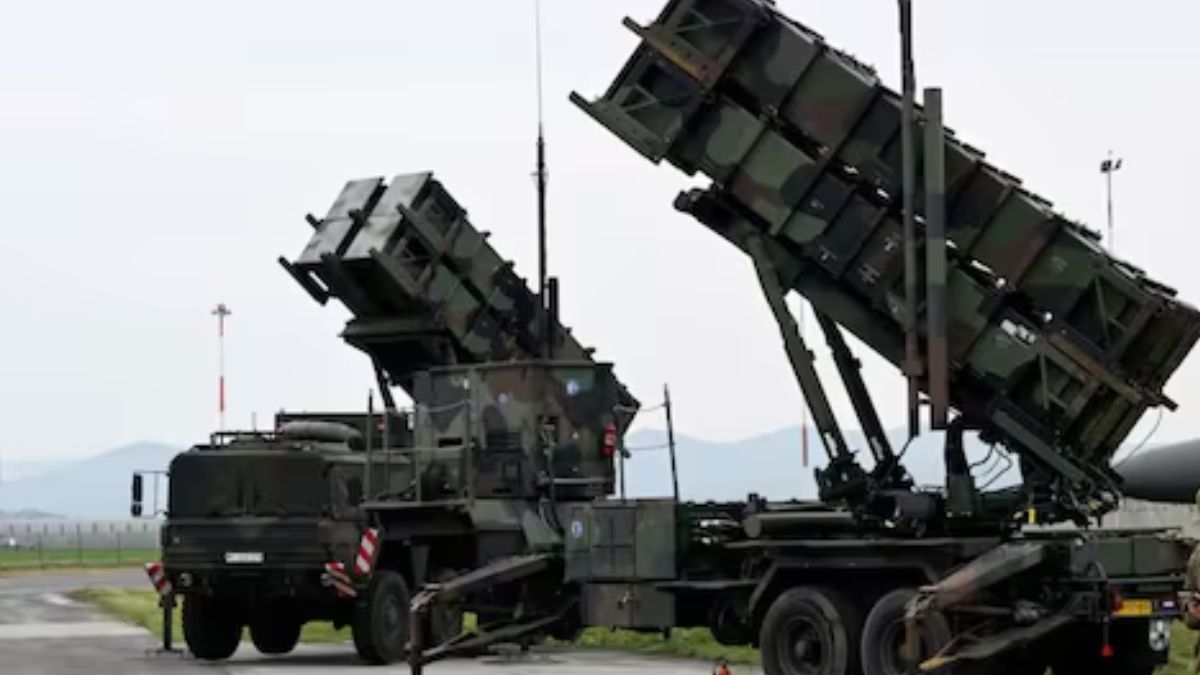Europe is significantly lacking in air defence capabilities to protect its eastern borders, as revealed by NATO’s internal assessments. Considering the gravity of the matter, NATO foreign ministers are set to meet in Prague to discuss this pressing issue, according to reports.
The ongoing conflict in Ukraine has underlined the crucial need for robust air defence, with Kyiv urgently requesting additional systems and rockets from Western allies to shield its cities, troops, and energy infrastructure from relentless bombing raids by Russian forces.
A senior NATO diplomat emphasised the critical role of air defence in protecting Eastern Europe from potential invasions, noting that current capabilities are grossly inadequate. NATO foreign ministers are set to meet in Prague to discuss this pressing issue in preparation for the alliance’s summit in Washington in July, reported FT.
The urgency of increasing air defences is driven by concerns that Russia could have the capability to attack a NATO member state by the end of the decade. The UK’s recent defence review highlighted the acute challenge of protecting against aerial attacks, a sentiment echoed by NATO diplomats who acknowledge the significant gaps in current defences.
Russia’s war against Ukraine has underscored the urgent need for robust air defence systems to safeguard cities, troops and infrastructure.
In order to address the vulnerabilities, European NATO states have taken initiatives to bolster air defence capabilities, according to reports. Germany’s Sky Shield initiative, involving over a dozen EU countries, aims to develop a shared air defence system utilizing US and Israeli technology. However, this initiative faces criticism from France, which has proposed an alternative concept supported by fewer allies.
Impact Shorts
More ShortsThe failure of European Nato states in recent months to provide additional air defence equipment to Ukraine has underscored the continent’s limited stocks of the expensive and slow-to-manufacture systems.
It has also prompted a series of overlapping initiatives to try to find long-term solutions. Last year, Germany launched its Sky Shield initiative with more than a dozen other EU countries to develop a shared air defence system using US and Israeli-developed technology.
However, France has publicly criticised the proposal and offered a rival concept backed by a smaller number of allies. Last week, Polish and Greek prime ministers submitted a letter to the European Commission urging the creation of a Europe-wide air defence system. The importance of air defence has been in sharper focus for Poland, which borders Ukraine and has seen missiles enter its airspace.
“We need less fragmentation and common projects. Like an air defence shield as proposed by Kyriakos Mitsotakis and Donald Tusk,” European Commission President Ursula von der Leyen said on social media platform X on Thursday.
In April Tusk said Polish generals and the head of the National Security Bureau Jacek Siewiera had told him it was a good idea for Poland to be part of several air defence projects.
“Only a strong, united Europe that pursues a common defence policy… will be able to prevent war. We are preparing for war not because this war is going to happen, but so that it won’t happen,” Tusk said on Thursday.
Following Russia’s full-scale invasion of Ukraine in February 2022, the US swiftly deployed a Patriot air defence system to protect a key airport in southern Poland, serving as a critical hub for transporting Western weapons to Kyiv. However, officials highlight that NATO members possess such limited air defence resources that deploying additional systems beyond their territories is nearly impossible.
In the UK, the Royal Navy’s six Type 45 destroyers are equipped with ballistic missile defence systems, but these vessels have been plagued by design flaws, limiting their effectiveness. The British Army’s state-of-the-art Sky Sabre ground-based air defence systems, although advanced, are also insufficient. The Sky Sabre’s missile interceptors have a range of only about 40 kilometres, and two of the six systems are currently stationed overseas, further diminishing the country’s defensive capabilities.
This shortage of air defence assets underscores the broader challenges faced by NATO in enhancing its defensive posture amidst growing threats, particularly in Eastern Europe. The alliance must address these critical gaps to ensure robust protection against potential aerial attacks, necessitating significant investments and strategic planning to bolster air defense infrastructure.
“The UK’s air defence capability is entirely inadequate,” said Jack Watling, a senior research fellow at the Royal United Services Institute think-tank in London told The Financial Times.
Full integration of Europe’s various air defence systems could help compensate for the shortfall by creating a dense mesh of sensors and interceptors across the continent. But “attempts to update Nato’s command and control infrastructure for air defence have never gotten off the ground”, Watling said.
Chandan Prakash is a Chief Sub-Editor with Firstpost. He writes on politics, international affairs, business and economy. He can be contacted at Chandan.Prakash@nw18.com
)